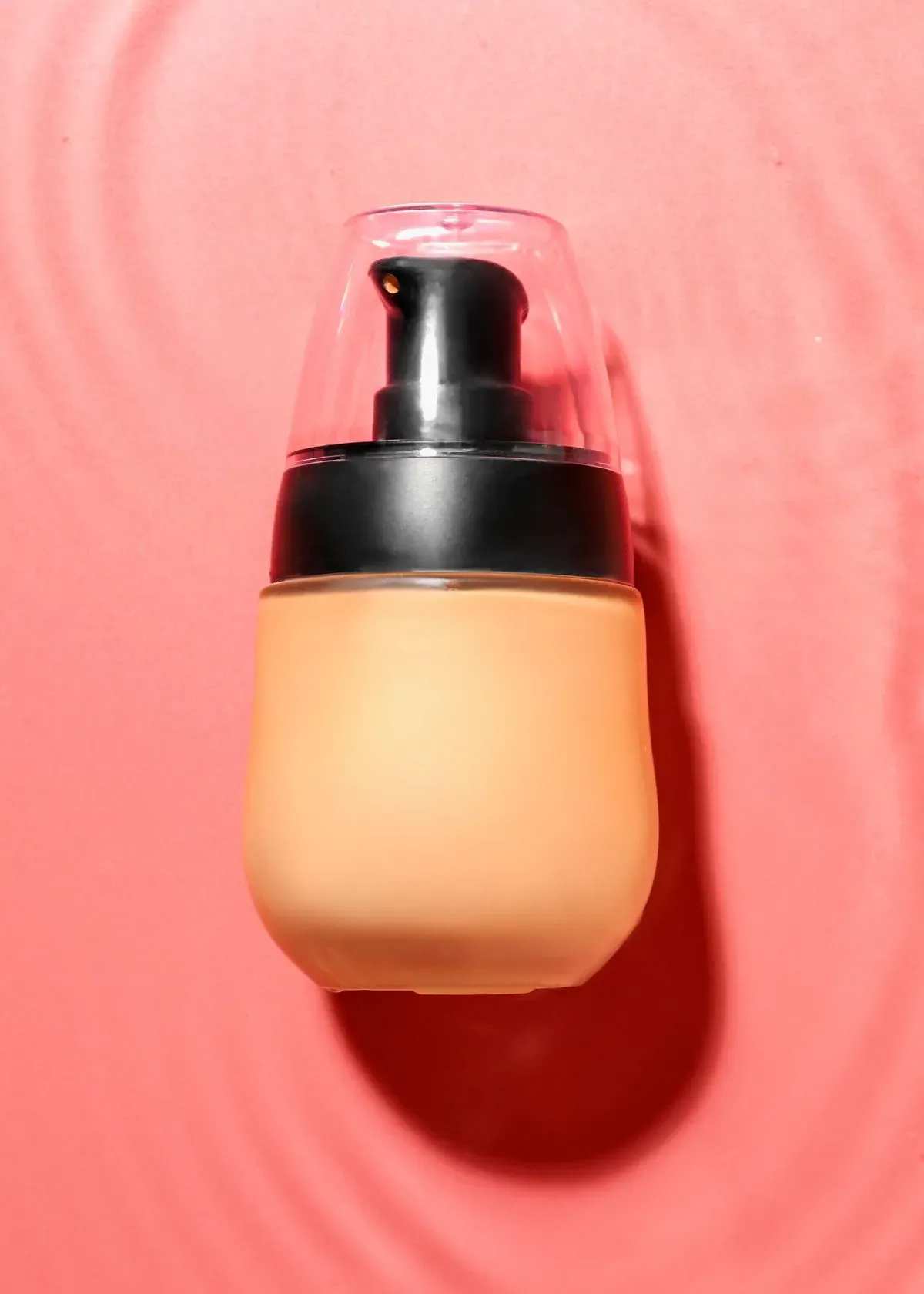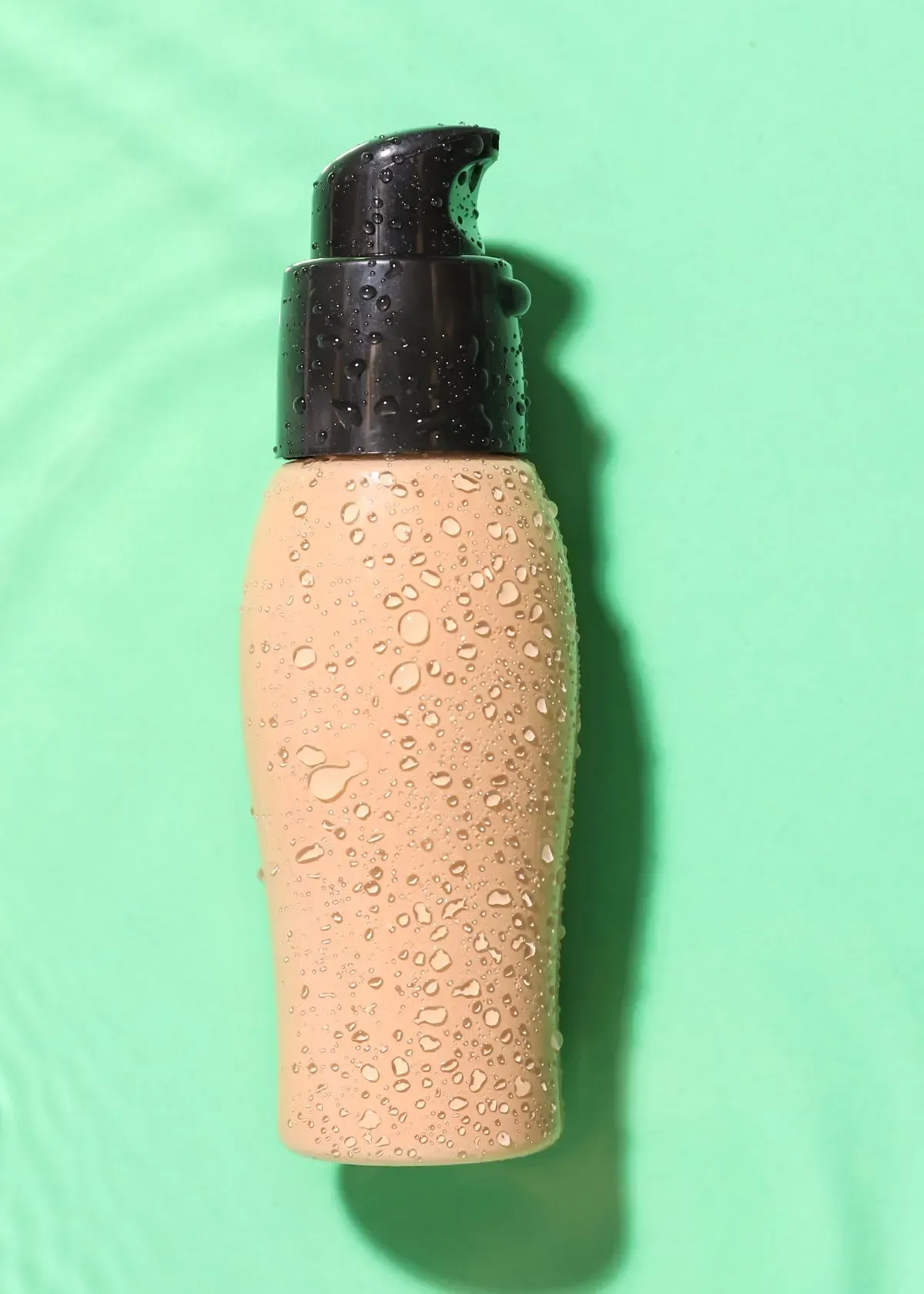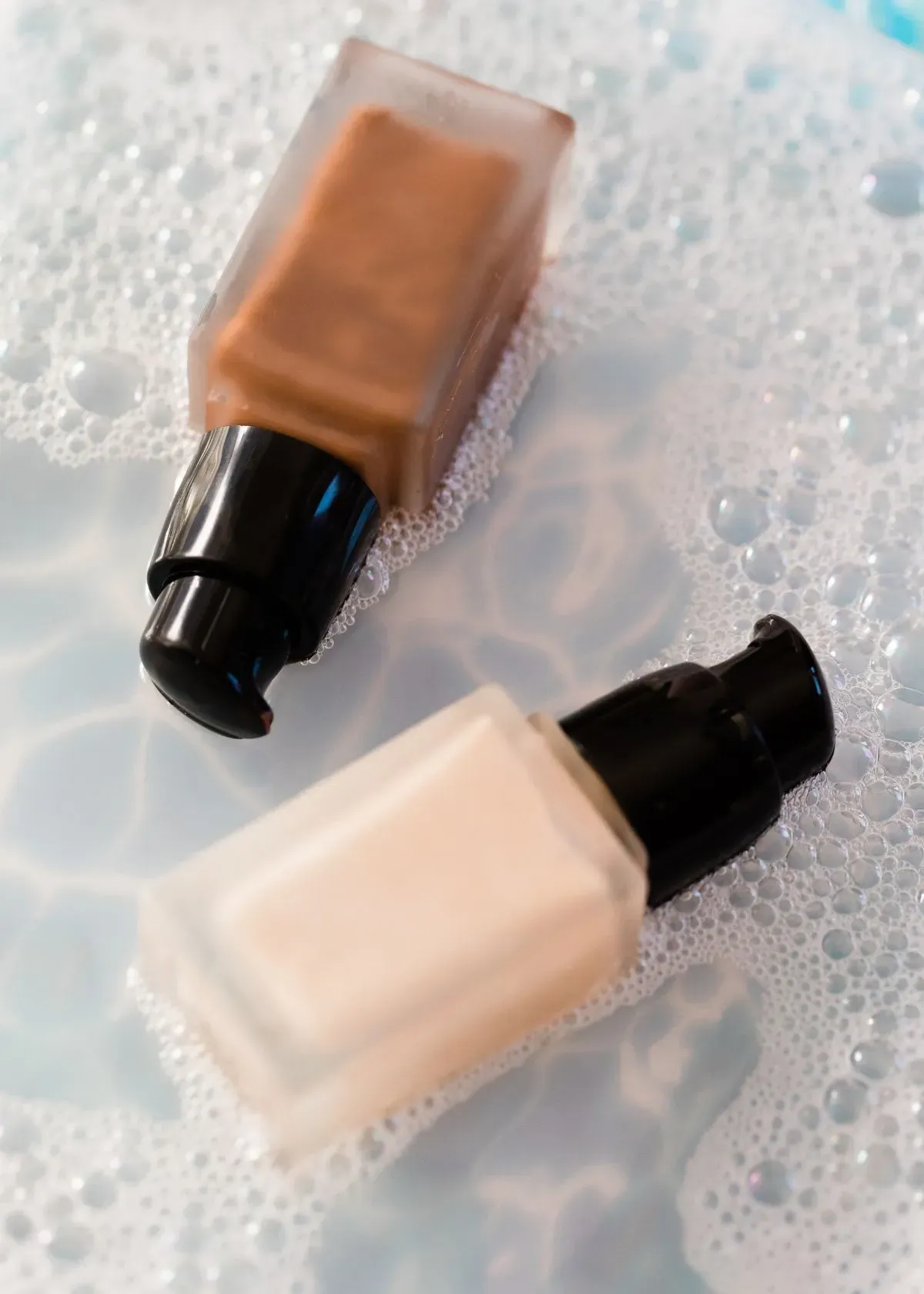Navigating the makeup aisle can feel like a high-stakes treasure hunt, especially when picking the right foundation. You're there, surrounded by an ocean of choices—matte, dewy, full coverage, sheer—but then you hit a snag: is your go-to blend water-based or silicone-based formula?
This isn't just cosmetic trivia; this detail holds power over whether you end up with that flawless finish or battle against an unexpected afternoon shine.
Like many beauty buffs before me, I've squinted at ingredient lists that might as well be in hieroglyphics. Have you ever felt your foundation prefers sliding off your skin rather than staying put? Or maybe it leaves behind a desert-like dryness instead? Those sneaky -cone and -siloxane suffixes near the top of the list are telltale signs of a silicone stronghold!
Fear not! My journey through mishaps and makeup mastery (sprinkled with some cosmetic chemistry savvy) has unearthed pearls of wisdom on this topic. In what follows, we'll uncover how to quickly spot if your base is riding the water waves or cruising with silicones and discuss which one might best harmonize with your skin's rhythm.
It's time to wield newfound knowledge for creating beauty looks that aren’t just about following trends but embracing what works beautifully for you.
- Check the foundation ingredients for words ending in -cone, -methicone, camellia sinensis leaf extract or -siloxane to spot a silicone-based product. Water as the first ingredient usually means it's water-based, but watch for silicones listed immediately after.
- Perform a simple test by placing a small amount of foundation into a glass of water; if it dissolves or disperses easily, it's likely water-based. Otherwise, you're looking at a silicone-based foundation if it remains separate from the water and doesn't blend in.
- Consider your skin type when choosing your foundation: oily or acne-prone skin may benefit more from breathable, lighter-textured water-based foundations, while dry or aging skin might find better hydration and coverage with silicone-based options.
- To prevent adverse reactions, especially on sensitive skin, do a patch test before fully applying any new foundation on your face. Be vigilant about potential irritants like fragrance and parabens in their formulas.
- Seek assistance from makeup professionals who can help determine whether you should opt for water-based primers or silicone-based foundations based on evaluating your specific skincare needs and desired makeup outcomes.
Differences Between Water-Based and Silicone-Based Foundations
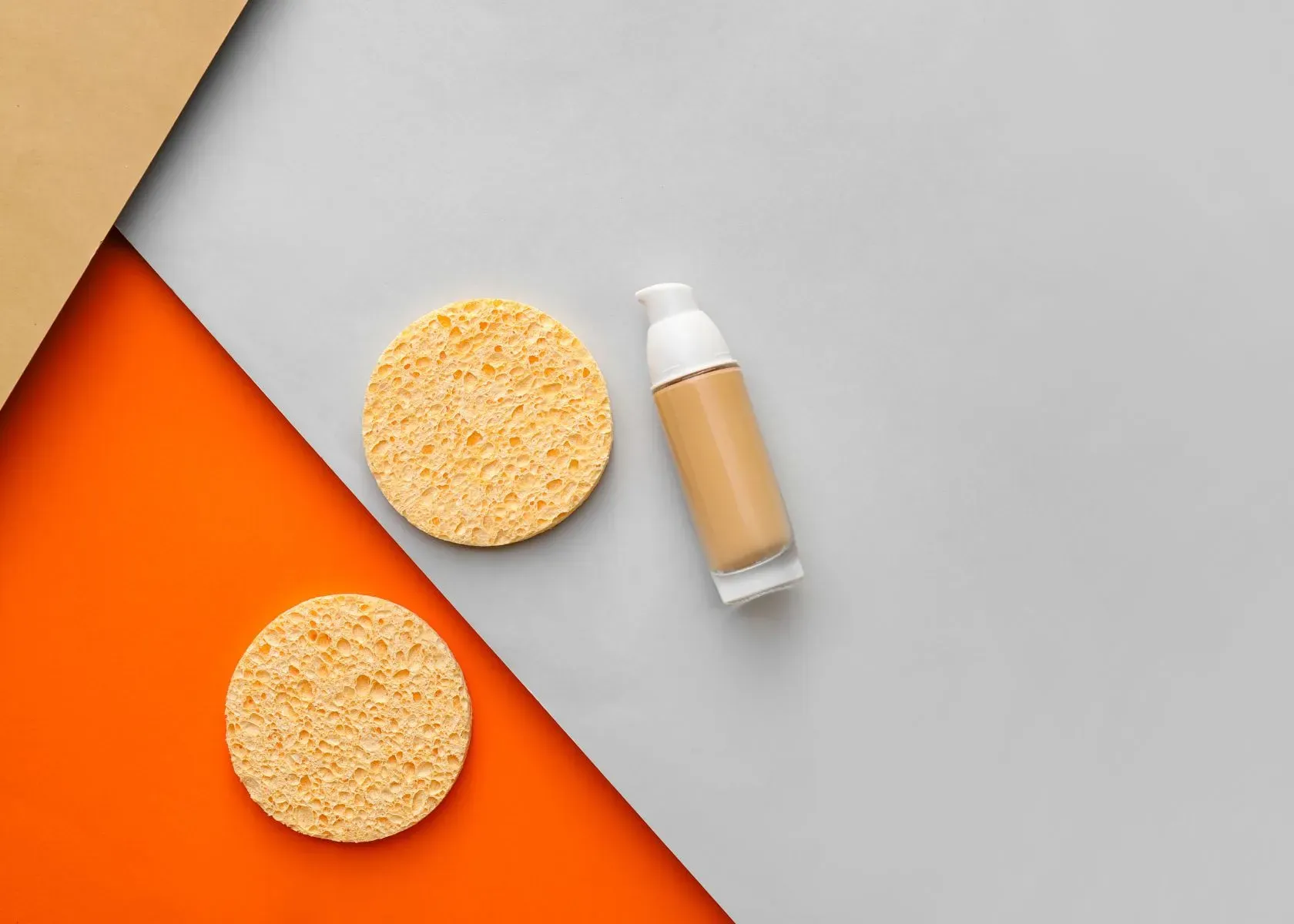
Water-based primer or foundations are lighter in texture and provide a breathable finish, but they may clog pores. On the other hand, silicone-based foundations offer long-lasting wear and smooth application, but they can cause skin irritation.
Ingredients to Look out For
Sometimes, I need to play detective with my makeup, especially when figuring out the base of my foundation. It's all about understanding what those ingredients on the label mean.
- Look for words ending in -cone, -methicone, or -siloxane, like dimethicone or cyclopentasiloxane. If these are listed near the top, your foundation is usually silicone-based.
- Spotting water as the first ingredient can signal a water-based foundation. However, confirm by checking that silicones aren't just below it on the list.
- Examine for natural oils such as jojoba, sunflower, or argan oil. Foundations featuring these may still be water-based but are geared towards hydrating.
- Notice if glycerin is high up on the ingredient list. This humectant is commonly found in water-based formulas due to its moisture-retaining properties.
- Observe how the product behaves when you place a small amount into a glass of water – if it dissolves or disperses easily, it leans towards water.
How to Identify if Your Foundation Is Water or Silicone-Based?
To identify if your foundation is silicone-based or water based foundation, you can follow these steps:
- Look for ingredients ending in -CONE or -XANE for silicone-based foundations.
- Check the top 5 ingredients; if none end in -CONE or -XANE, it's likely water-based.
- Observe the second or third ingredient for silicone derivatives like -cone, -methicone, and -siloxane.
- Squeeze a small amount into a glass of water; if it dissolves, it's likely water-based.
- Assess the texture; water-based foundations are typically lighter and more easily spreadable due to their water content.
- Consider the finish; silicone-based foundations often provide a smoother, more matte appearance.
- Determine your skin type; oily or acne-prone skin may benefit from water-based foundations, while dry or aging, or combination skin may prefer silicone-based ones.
- Read the labels carefully to understand the formulation and choose the foundation for your desired makeup look.
Features of Water-Based Foundations

Water-based foundations have a lighter texture and provide a breathable finish, making them ideal for those with oily or acne-prone skin. However, they may also have the potential to clog pores if not properly cleansed at the end of the day.
Lighter Texture
Water-based foundations are renowned for their lighter texture, allowing for a more natural and breathable finish. Their formulation, typically containing water as a critical ingredient, gives them a weightless feel on the skin.
This makes them ideal for individuals with oily or acne-prone skin, providing coverage without clogging the pores. Moreover, water-based foundations can be easily spread across the face due to their light consistency and are often recommended for a fresh and radiant makeup look.
Silicone-based foundations provide a smoother and matte finish compared to water-based ones. These formulations have heavier textures due to silicone derivatives in their composition.
Breathable Finish
Water-based foundations are known for their lighter texture and ability to provide a more natural, breathable finish. A foundation with a breathable finish allows the skin to maintain its natural moisture and avoid feeling heavy or cakey.
This type of foundation is ideal for those with oily or acne-prone skin, as it helps prevent clogged pores while giving a fresh, dewy appearance. Additionally, water-based foundations are easier to spread due to the inclusion of water in their formula, making them suitable for achieving a seamless application.
On the other hand, silicone-based foundations contain silicone derivatives that give them a smoother, matte finish. While they may not offer the same level of breathability as water-based foundations, silicone-based formulas are preferred by individuals with dry or aging skin as they provide a hydrating and plumping effect.
Potential for Clogged Pores
Due to their thicker consistency and occlusive nature, oil-based foundation, silicone-based foundations have a higher potential for clogging pores. Ingredients such as dimethicone and Cyclopentasiloxane can create a barrier on the skin, trapping dirt, oil, and dead skin cells, leading to potential breakouts.
If you're prone to acne or have oily skin, it's essential to be mindful when choosing a foundation.
Water-based foundations are generally lighter in texture and less likely to clog pores. They allow the skin to breathe more easily because they don't contain heavy silicone derivatives.
Features of Silicone-Based Foundations
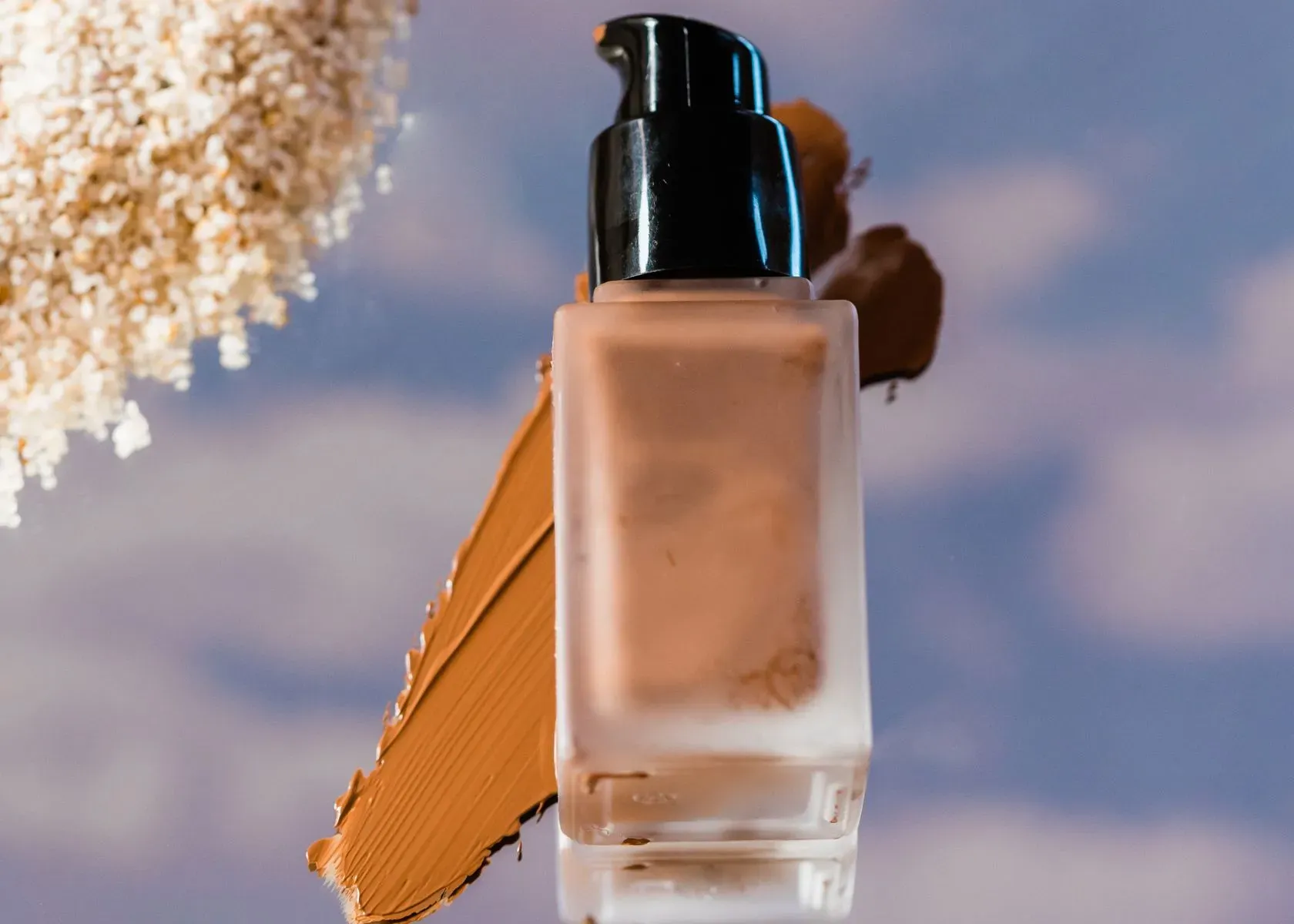
Unlike oil-based foundations, silicone-based foundations have a long-lasting formula that provides a smooth application. However, they can potentially cause skin irritation for some individuals.
Long-Lasting
Silicone-based foundations are known for their long-lasting properties, allowing your makeup to stay put throughout the day without fading. The silicone derivatives in these foundations create a smooth and matte finish that helps to lock in your makeup for extended wear.
This is especially beneficial for those with busy schedules or long days, as it reduces the need for frequent touch-ups.
Additionally, the longevity of silicone-based foundations makes them ideal for special occasions or events where you want your makeup to remain flawless from morning until night. With their ability to provide lasting coverage and hold up against environmental factors, such as humidity or sweat, they offer a reliable option for maintaining a fresh look throughout the day.
Smooth Application
Silicone-based foundations and silicone-based primers offer a smooth application due to the presence of silicone derivatives in their formulation. These ingredients create a glide-on effect, allowing for easy and even coverage on the skin.
The use of -cone, -methicone, and -siloxane in silicone-based foundations helps to fill in fine lines and imperfections, resulting in a flawless and matte finish without feeling heavy or cakey.
This makes them ideal for individuals seeking a polished makeup look with long-lasting wear.
Water-based foundations also provide smooth application as they are typically lighter in texture. Their inclusion of water as a primary ingredient allows for seamless blending onto the skin, creating a natural and breathable finish.
Can Cause Skin Irritation
Silicone-based primer and stick foundations can cause skin irritation due to silicone derivatives, which may clog pores and lead to breakouts. Skin sensitivity to these ingredients can result in redness, itching, or a burning sensation upon application.
Individuals with sensitive skin need to be cautious when using silicone-based foundations and consider opting for water-based alternatives.
Water-based foundations are generally gentler on the skin and less likely to irritate compared to silicone-based formulas. Since they are lighter in texture and more breathable, water-based foundations are suitable for those prone to skin sensitivity or with acne-prone skin.
Importance of Knowing Your Foundation's Base
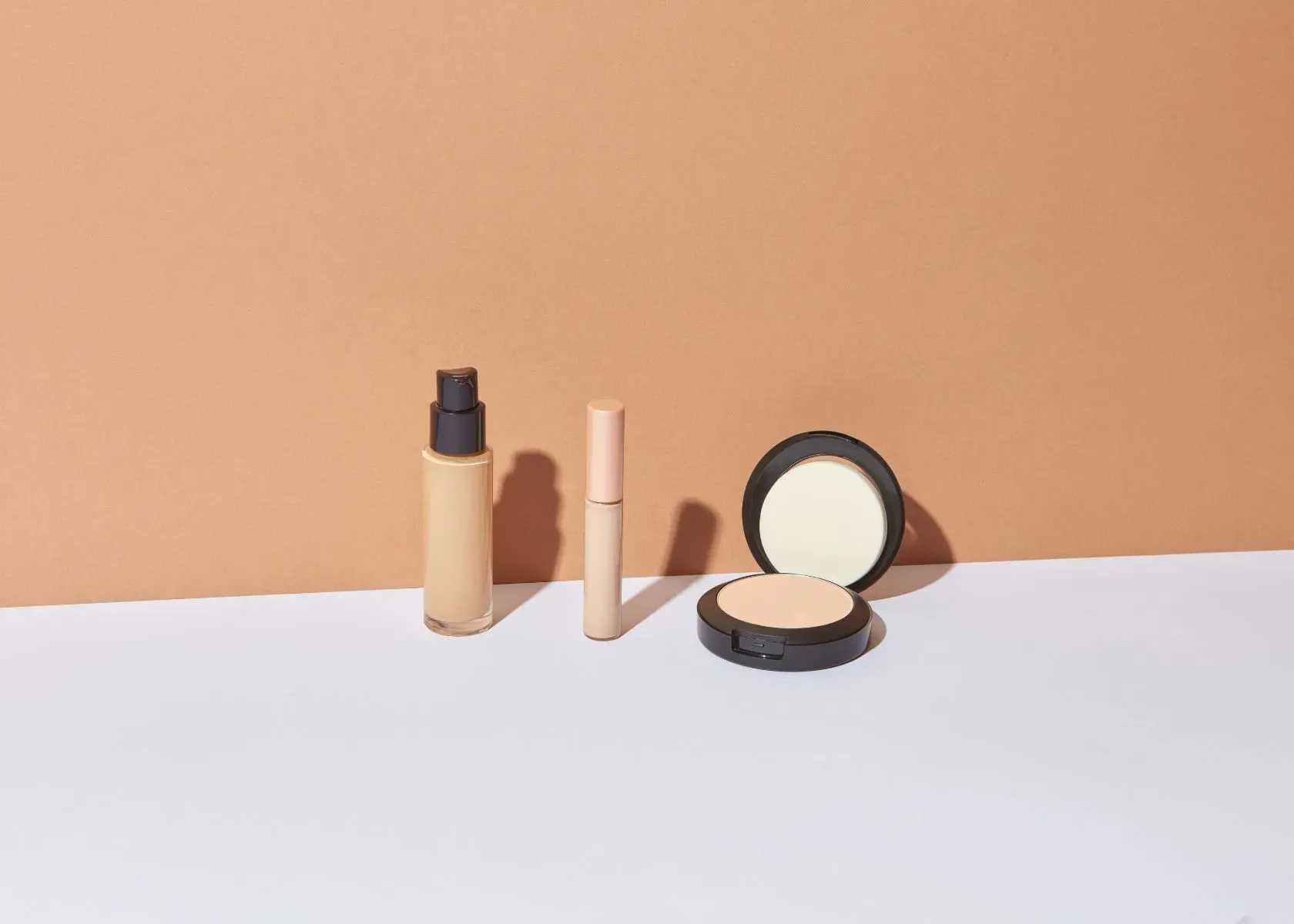
Knowing the base of your foundation is crucial for avoiding potential skin reactions and achieving your desired makeup look. Read on to learn more about choosing the right foundation for your skin!
Avoiding Potential Skin Reactions
I always check the ingredient list for any known allergens or irritants to avoid potential skin reactions. This is particularly important if you have sensitive skin or are prone to breakouts.
It's advisable to avoid foundations containing fragrance, parabens, and certain preservatives, as they can trigger adverse skin reactions.
Furthermore, doing a patch test all over your face before applying a new foundation is essential. Simply apply a small amount of the product on your inner forearm and wait 24 hours to see if any redness, itching, or irritation occurs.
This simple step can help prevent unwanted skin issues caused by using the wrong type of foundation.
Moving forward, understanding how different base formulations can affect your skin plays a crucial role in ensuring healthy and radiant-looking skin.
Achieving the Desired Makeup Look
To achieve my desired makeup look, I need to consider the type of foundation used. I opt for a water-based foundation that suits my oily or acne-prone skin for a more natural and breathable finish.
Its lighter texture is ideal for spreading easily across the skin. On the other hand, when aiming for a smoother and more matte finish with added hydration and plumping effect, I choose silicone-based foundations suitable for dry or aging skin.
These foundations contain ingredients ending in -cone, -methicone, and -siloxane as key components.
I also ensure that the chosen foundation aligns with my skincare needs by considering its longevity and how it complements other makeup products. The proper selection helps me avoid potential skin reactions while achieving my desired flawless look.
Frequently Asked Questions
As I learn more about how these ingredients can uniquely affect dryness, acne, and absorption into the skin, I still have many lingering questions about recognizing at a glance if my complexion products contain hydrating water or pore-clogging silicones.
In this FAQ, I’ll touch on some of the top questions I had around distinguishing water vs. silicone foundations, from decoding cryptic ingredient lists to understanding the impact of formulas, finishes, and kinds of applicators.
How can I figure out my foundation's base?
Check your foundation ingredients on the label; if it starts with water, it's likely water-based, and if it lists silicones like dimethicone or cyclopentasiloxane at the top, then it’s probably silicone-based.
Why does knowing the base of my makeup matter?
Knowing whether your foundation is water or silicone-based helps you choose compatible skincare products and makeup items for smoother application and better-staying power.
What clues in ingredient labeling show a water-based product?
In a water-based foundation, "aqua" or "water" usually appears first on the ingredient list, indicating that water is the main component providing its lightweight texture.
Can understanding cosmetic product classification improve my makeup application?
Yes! Knowing your cosmetic classification (water or silicone) guides you to prepare your skin properly which leads to better adherence and a more flawless finish of your makeup base.
Do any makeup techniques help identify my foundation type quickly?
One quick technique is to place a small amount of foundation between two fingers and rub them together; if it feels smooth and slips easily, it might be silicone-based whereas if absorbs fast with little residue, likely indicates a water formulation.
Conclusion
Understanding whether your foundation is water or silicone-based is essential for achieving the desired makeup look. By identifying key ingredients and conducting simple tests, you can easily determine the base of your foundation.
These practical strategies allow for efficient decision-making when choosing the right foundation for your skin type. Are you ready to take charge of your skincare routine by ensuring that your foundation matches your skin's needs? Embracing this knowledge can significantly improve how your makeup looks and feels on your skin.
Explore further resources or consult a professional makeup artist to gain additional guidance tailored to your needs. Don't forget to share your thoughts on foundations in the comments below.
References
- Yan, Y., Lee, J., Hong, J., & Suk, H.-J. (2020). Measuring and describing the discoloration of liquid foundation. Color Research & Application, 45(6), 1135-1143.
Learn More About Water-Based Foundations
